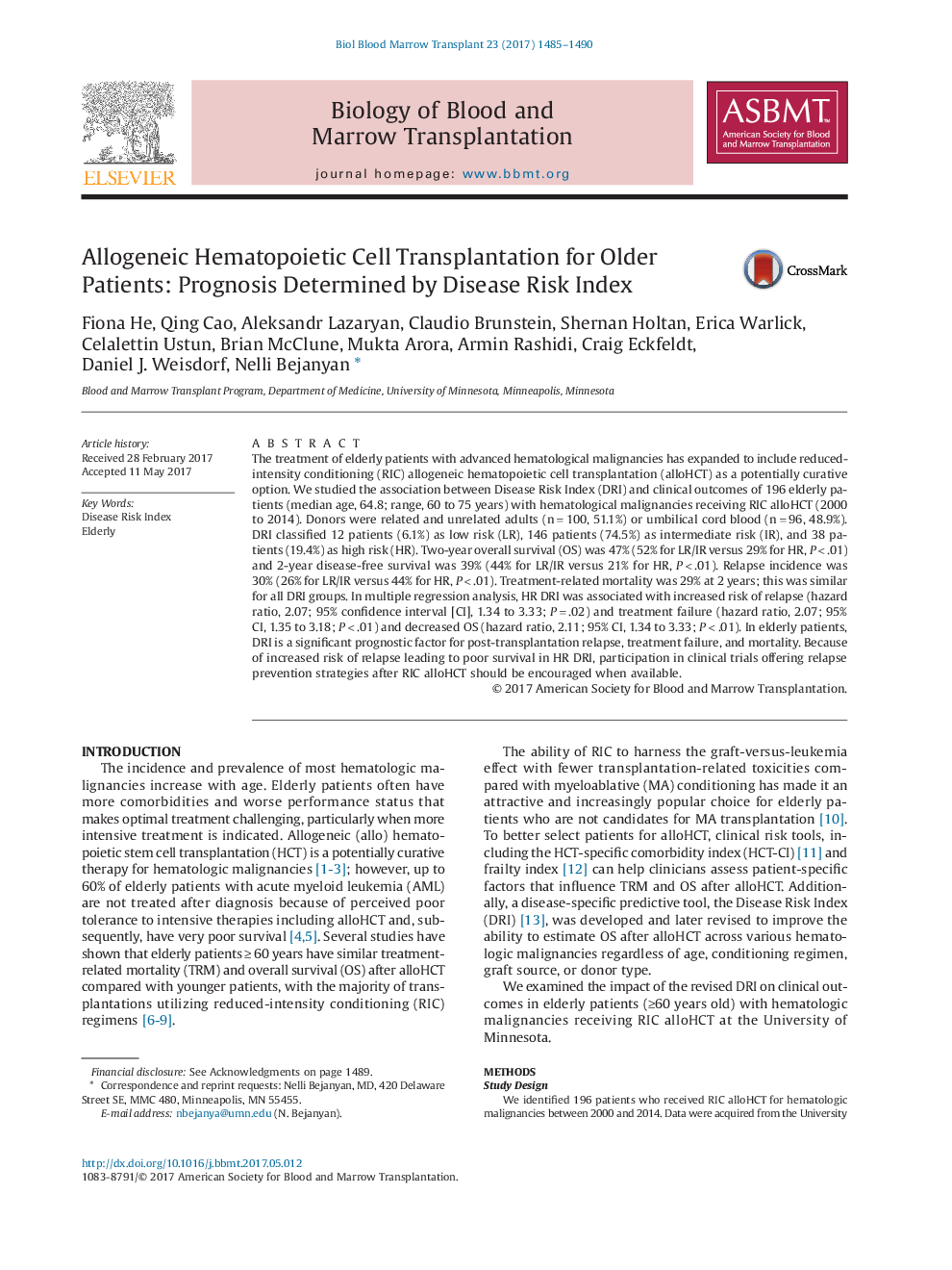| کد مقاله | کد نشریه | سال انتشار | مقاله انگلیسی | نسخه تمام متن |
|---|---|---|---|---|
| 5524381 | 1546237 | 2017 | 6 صفحه PDF | دانلود رایگان |
- The Disease Risk Index score is important prognostic factor for elderly patients â¥60 years
- The high-risk Disease Risk Index group has reduced overall and disease-free survival after transplantation
- Age group 60 to 64 versus â¥65 does not affect survival or treatment-related mortality
- Novel or alternative therapies are needed for high-risk and very-high-risk disease
The treatment of elderly patients with advanced hematological malignancies has expanded to include reduced-intensity conditioning (RIC) allogeneic hematopoietic cell transplantation (alloHCT) as a potentially curative option. We studied the association between Disease Risk Index (DRI) and clinical outcomes of 196 elderly patients (median age, 64.8; range, 60 to 75 years) with hematological malignancies receiving RIC alloHCT (2000 to 2014). Donors were related and unrelated adults (nâ=â100, 51.1%) or umbilical cord blood (nâ=â96, 48.9%). DRI classified 12 patients (6.1%) as low risk (LR), 146 patients (74.5%) as intermediate risk (IR), and 38 patients (19.4%) as high risk (HR). Two-year overall survival (OS) was 47% (52% for LR/IR versus 29% for HR, Pâ<â.01) and 2-year disease-free survival was 39% (44% for LR/IR versus 21% for HR, Pâ<â.01). Relapse incidence was 30% (26% for LR/IR versus 44% for HR, Pâ<â.01). Treatment-related mortality was 29% at 2 years; this was similar for all DRI groups. In multiple regression analysis, HR DRI was associated with increased risk of relapse (hazard ratio, 2.07; 95% confidence interval [CI], 1.34 to 3.33; Pâ=â.02) and treatment failure (hazard ratio, 2.07; 95% CI, 1.35 to 3.18; Pâ<â.01) and decreased OS (hazard ratio, 2.11; 95% CI, 1.34 to 3.33; Pâ<â.01). In elderly patients, DRI is a significant prognostic factor for post-transplantation relapse, treatment failure, and mortality. Because of increased risk of relapse leading to poor survival in HR DRI, participation in clinical trials offering relapse prevention strategies after RIC alloHCT should be encouraged when available.
Journal: Biology of Blood and Marrow Transplantation - Volume 23, Issue 9, September 2017, Pages 1485-1490
